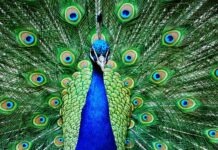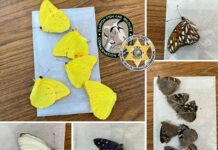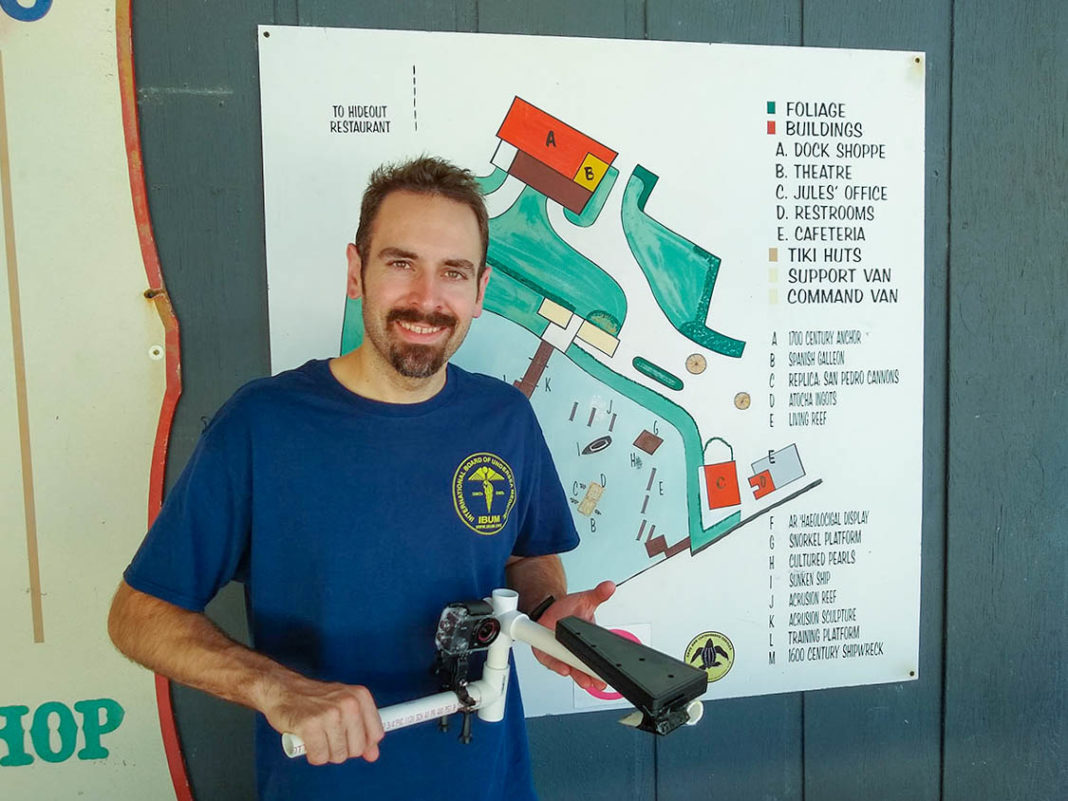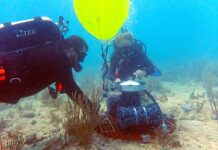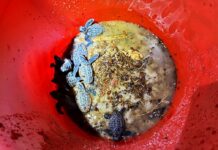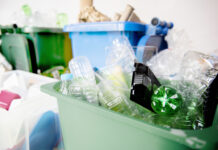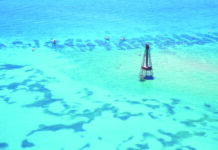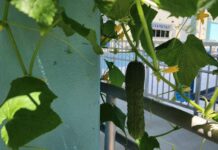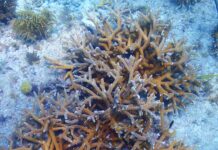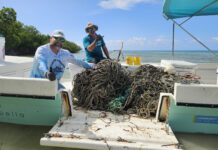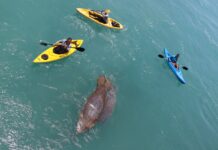In October, The Explorers Club scientists tested a variety of new technologies at Jules Undersea Lodge in Key Largo. Among the researchers was mission specialist Kyle Foster, an image scientist from North Virginia, who’s trying to help people see coral reefs in a whole new way.
Foster studies images, working with different camera systems on airplanes and satellites to view different things in the world. The field is called “remote sensing” and includes technology like radar and infrared. Basically, light that we see is made up of colors. Foster studies the light reflected off an object, breaking it down into those different component colors. The specific colors and intensities reflected back tell him about the composition of the thing that is reflecting the light.
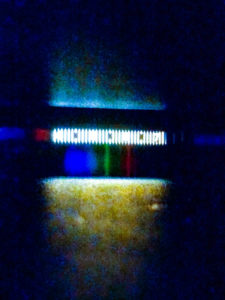
While Foster specializes on remote images traveling through the air, during this mission, he pushed his boundaries into another medium – underwater imaging. “Corals are at risk,” he said. “There’s a lot of different things changing in the environment they live in – rising temperatures, ocean acidification, pollutants – that can cause coral bleaching.”
In a world with so many local and regional stressors affecting reef health, Foster realized he could apply the science from his field to the underwater world. “In order to maintain good stewardship of our oceans and to protect them for all to enjoy in perpetuity, we need to constantly monitor the health of our reefs,” said Foster. But, what one scientist has the time or funding for that? Foster didn’t, so he came up with the idea to use citizen-scientists as “eyes in the water,” helping coral biologists study the reefs. “Lots of people are diving to visit these reefs already and they have GoPros,” he says. “Not a lot of them have underwater spectrometers, so what I designed and am testing is a low-cost underwater spectrometer that attaches to their GoPro.”
What exactly is a spectrometer? At its most basic, it’s the gadget that breaks light into its constituent colors. Foster’s prototype utilizes a “fancy piece of glass” to bounce light off the glass and show the constituent colors of the object being looked at.
He explains how this technology can be used to measure coral health. “With healthy corals, we’d expect to see a very intense response from certain colors,” he explains. “Maybe we’d see bright orange, a red stripe and not a lot of other colors in a healthy coral’s spectrum.” As corals bleach, they gradually become whiter, and the colors in their spectra have less peaks and appear more uniform. When they’re fully bleached and bright white in color, Foster’s spectrometer would show the entire rainbow. Using the different spectra emitted by different corals, Foster can compare different intensities of different colors to get a sense of whether a coral is healthy, stressed or dying.
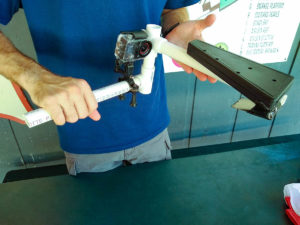
Spectrometers usually cost $10,000 and up for an entry-level, research-ready piece. Foster is aiming for his to cost $100 to $150 and to still produce useful data for research. He specifically set out to make a simple DIY, or do-it-yourself, spectrometer for everyday divers and citizen-scientists to make and use. “I want people to be able to use off-the-shelf parts like PVC pipes and mirrors, look at an infographic or watch a 5-minute video at a dive shop about how to use it, attach it to their own GoPro or underwater video recorder, and point at a reef,” he says.
This video footage of the reef with a little rainbow spectrum band at the top of the picture would then be uploaded to a site with location data. The hope is for the site to do any necessary calculations and analysis automatically, providing marine biologists and scientists with a lot of data relatively quickly and cheaply. Foster hopes that his spectrometer will be a tool to democratize reef study through citizen-science.
More importantly, that rainbow pattern could demonstrate to image scientists like Foster the amount of bleaching on different parts of the reef, allowing them to remotely measure the health of the reef in those areas. “The colors give us a hint on what’s going on health-wise with the reef without having to dive every single reef ourselves,” he adds. Similar ideas have been used in the agricultural industry, allowing farmers to survey the health of an entire field without going to each plant individually.
Over the next few months, Foster plans to refine his design to make it easier to get the tell-tale rainbow on the screen. He hopes to test his version 2.0 model in the quarries near his home in Virginia before bringing them back to the Keys.







